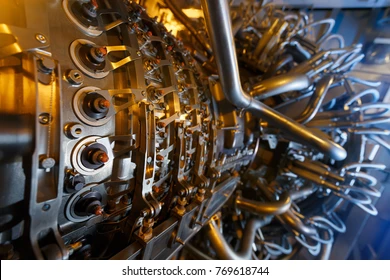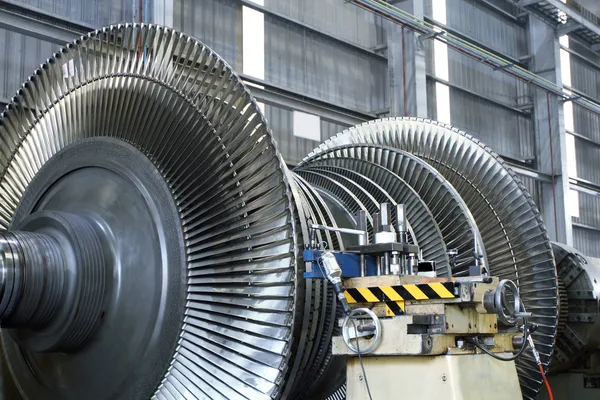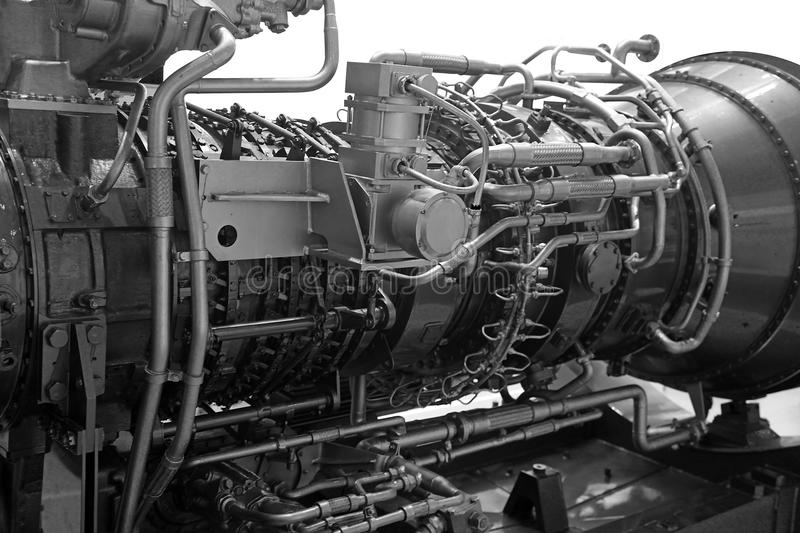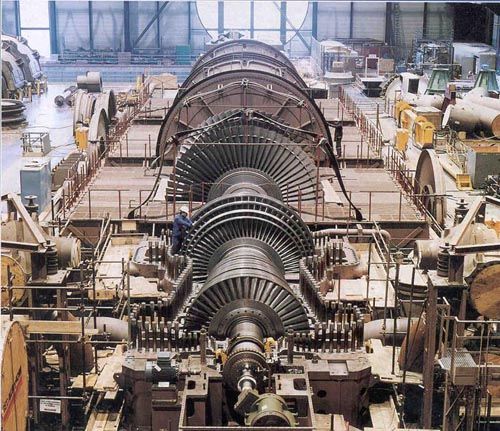DIAGNOSTIC TOOLS TO AVOID FAILURES IN TURBOMACHINERY



CENTRIFUGAL COMPRESSORS
GAS TURBINES
SPECIAL STEAM TURBINES
WHY USE DIAGNOSTIC TOOLS TO AVOID FAILURES IN TURBOMACHINERY
Here’s why these tools are important:
Early Detection of Issues:
- Vibration analyzers allow for real-time monitoring and analysis of vibrations in turbomachinery. By detecting abnormal vibration patterns, such as those caused by imbalance, misalignment, or mechanical faults, potential issues can be identified early, enabling timely maintenance or corrective actions to prevent critical failures.
- Operational performance software monitors key parameters such as temperatures, pressures, flow rates, and efficiency. Deviations from normal operating conditions can indicate potential issues or inefficiencies, enabling operators to take corrective measures before they escalate into critical failures.
- Thermodynamic studies analyze the behavior of turbomachinery in terms of efficiency, temperature differentials, and energy transfer. These studies provide insights into potential performance degradation or abnormalities, facilitating proactive maintenance or operational adjustments.
Reliability and Availability Improvement:
- Diagnostic tools enable proactive maintenance and condition monitoring, enhancing the reliability and availability of turbomachinery. Early detection of potential failures or deviations from normal operation allows for scheduled maintenance and repairs, reducing the risk of unscheduled shutdowns and improving overall reliability.
- By identifying and addressing potential issues early, operators can mitigate safety risks associated with critical failures, protecting personnel and equipment.
Efficiency and Performance Optimization:
- Diagnostic tools and simulations provide insights into the performance of turbomachinery, enabling operators to optimize efficiency and performance. By analyzing vibration patterns, operational data, and thermodynamic behavior, operators can make informed decisions regarding adjustments, maintenance actions, or operational strategies to improve efficiency, reliability, and overall performance.
Safety Enhancement:
- Proactive maintenance and condition monitoring through diagnostic tools help prevent critical failures that can pose safety hazards. By identifying and mitigating potential issues early, the risk of catastrophic events or accidents caused by turbomachinery failures is significantly reduced.
Cost Reduction:
- The use of diagnostic tools helps minimize unscheduled downtime, costly repairs, or replacements due to critical failures. Proactive maintenance based on diagnostic data enables efficient resource allocation, as maintenance activities can be planned in advance, reducing emergency repairs and associated costs.
- Optimization of performance through analysis and simulations leads to energy savings, improved efficiency, and optimized operational strategies, resulting in reduced operational costs.
Regulatory Compliance:
- The use of diagnostic tools and adherence to recommended maintenance practices can help meet regulatory requirements for safety, reliability, and environmental standards in the power generation and oil and gas industries.
By using diagnostic tools based on vibration analyzers, operational performance software, thermodynamic studies, or mathematical models, industries can detect issues early, enhance reliability and availability, optimize efficiency and performance, improve safety, reduce costs, and comply with regulatory standards. This proactive approach helps avoid critical failures or impacts in turbomachinery, ensuring the reliability, availability, safety, efficiency, and performance of existing and new plants in the power generation and oil and gas industries, while avoiding critical failures or unscheduled shutdowns.
WHERE, WHEN, WHAT, WHICH AND HOW TO USE DIAGNOSTIC TOOLS TO AVOID FAILURES IN TURBOMACHINERY
Where to Use Diagnostic Tools:
- Diagnostic tools should be used in power generation plants and oil and gas facilities that utilize turbomachinery such as centrifugal compressors, gas turbines, and special steam turbines.
- These tools can be applied in various locations, including compressor or turbine rooms, control rooms, or monitoring centers, where the necessary sensors, software, and data analysis systems can be installed and managed.
When to Use Diagnostic Tools:
- Diagnostic tools should be used throughout the lifecycle of turbomachinery, including during the design, commissioning, operation, and maintenance stages.
- Continuous monitoring and analysis are recommended during normal operating conditions, as well as during offset conditions, which involve non-standard or transient operations.
- Regular data collection and analysis should be performed to establish baseline performance, identify deviations, and detect potential issues early.
What Diagnostic Tools to Use:
- Vibration analyzers are used to monitor and analyze the vibration levels and patterns of turbomachinery components, such as rotors, bearings, and blades, to identify abnormalities and potential failures.
- Operational performance software allows for real-time monitoring and analysis of key operational parameters, such as temperatures, pressures, flow rates, and efficiency, to detect deviations from normal operating conditions.
- Thermodynamic studies analyze the behavior of turbomachinery in terms of compression efficiency, temperature differentials, energy transfer, and fluid flow characteristics, providing insights into performance, efficiency, and potential issues.
- Mathematical models, such as finite element analysis (FEA), computational fluid dynamics (CFD), and system simulation tools, are used to simulate and analyze the dynamic and thermodynamic behavior of turbomachinery, predicting critical frequencies, stresses, flow characteristics, and overall performance.
Which Components and Parameters to Monitor:
- Diagnostic tools should monitor critical components, such as rotors, bearings, blades, seals, valves, and casings, as well as important operational parameters, including temperatures, pressures, flow rates, and efficiency.
- The specific components and parameters to monitor may vary based on the type of turbomachinery and its critical failure modes, as well as the design and operational characteristics of the plant.
How to Use Diagnostic Tools:
- Install appropriate sensors and instrumentation in strategic locations to capture relevant data from the turbomachinery components and operational parameters.
- Utilize dedicated software or systems to collect, store, and analyze the data obtained from the diagnostic tools.
- Regularly analyze the data to establish baselines, detect deviations, and identify potential issues or trends.
- Interpret the diagnostic results with the help of experts and specialists in vibration analysis, thermodynamics, and mathematical modeling.
- Take appropriate actions based on the analysis findings, including implementing maintenance or repair activities, adjusting operational parameters, or optimizing design features.
It’s important to note that the specific application of diagnostic tools may vary depending on the plant’s unique requirements, industry standards, and manufacturer recommendations. Engaging with industry experts, manufacturers, and consultants can provide valuable guidance on the selection, installation, and utilization of diagnostic tools for turbomachinery.
By using diagnostic tools effectively in the right locations, at the appropriate times, and for the relevant components and parameters, industries can obtain reliable analysis and simulations, enabling them to proactively avoid critical failures or impacts in turbomachinery. This approach ensures improved reliability, availability, safety, efficiency, and performance in both existing and new power generation plants and oil and gas facilities, while minimizing the risk of critical failures or unscheduled shutdowns.



LIMITATIONS IN ENGINEERING & DESIGN TO USE DIAGNOSTIC TOOLS TO AVOID FAILURES IN TURBOMACHINERY
Here are some key limitations:
Complex Operating Conditions:
- Turbomachinery, such as centrifugal compressors, gas turbines, and special steam turbines, operates under complex and varying conditions, including high temperatures, pressures, and rotational speeds. These conditions can pose challenges for accurate measurements, analysis, and simulation using diagnostic tools.
- Extreme operating conditions may limit the availability or suitability of certain sensors, materials, or instrumentation required for effective data collection and analysis.
Limited Accessibility and Space Constraints:
- The design of turbomachinery often involves tight spaces, intricate geometries, and restricted access to critical components. This can make the installation of sensors, monitoring equipment, or diagnostic tools challenging or even impractical.
- Limited space can also restrict the implementation of certain diagnostic tools, such as vibration analyzers or additional instrumentation, which may require modifications or compromises in the equipment design.
Complex Dynamics and Fluid Mechanics:
- The behavior of turbomachinery involves complex dynamics, including rotor dynamics, fluid-structure interactions, and unsteady fluid flows. These complexities can make it challenging to accurately model and predict the behavior of turbomachinery using mathematical models or simulations.
- Capturing the full range of transient or off-design operating conditions and their impact on turbomachinery performance can be difficult, potentially limiting the accuracy and reliability of the analysis and simulations.
Lack of Comprehensive Data:
- Accurate diagnostic analysis and reliable simulations depend on the availability of comprehensive and accurate data. However, obtaining complete data sets during operation, especially for existing plants, can be challenging.
- Limited or incomplete data, such as operating conditions, performance parameters, or historical records, may constrain the effectiveness of diagnostic tools, as they rely on accurate input data for calibration, validation, and accurate modeling.
Expertise and Resources:
- Effective utilization of diagnostic tools requires expertise in vibration analysis, thermodynamics, mathematical modeling, and simulation techniques. The availability of qualified personnel, time, and resources to interpret and apply the diagnostic results may be limited, potentially affecting the reliability and effectiveness of the analysis and simulations.
Compatibility and Integration:
- Integrating diagnostic tools into existing turbomachinery systems, control systems, or plant infrastructure may require compatibility with different communication protocols, data management systems, or software interfaces. These compatibility challenges can hinder the seamless integration and utilization of diagnostic tools in the existing plant setup.
It is important to acknowledge these limitations and consider them during the engineering and design phases. Collaboration between equipment manufacturers, industry experts, and researchers is crucial to addressing these limitations and advancing the capabilities of diagnostic tools.
Despite these limitations, the utilization of diagnostic tools can still provide valuable insights and contribute to the prevention of critical failures or impacts in turbomachinery. By considering these limitations and applying a holistic approach that combines diagnostic tools with other preventive measures, such as robust design practices, comprehensive maintenance programs, and expert consultation, industries can improve the reliability, availability, safety, efficiency, and performance of turbomachinery in power generation plants and the oil and gas industries while minimizing the risk of critical failures or unscheduled shutdowns.
PROCEDURES, ACTIONS, STUDIES, ANALYSIS, MITIGATIONS AND RECOMMENDATIONS TO USE DIAGNOSTIC TOOLS TO AVOID FAILURES IN TURBOMACHINERY
Procedures and Actions:
- Establish a comprehensive condition monitoring program that includes the use of vibration analyzers and operational performance software. This program should define the frequency of data collection, locations of sensors, and procedures for data analysis.
- Develop and implement a proactive maintenance strategy based on the diagnostic data. This strategy should include regular inspection, lubrication, and replacement of critical components, as well as addressing any identified issues promptly.
- Conduct regular thermodynamic studies to analyze the behavior of turbomachinery, evaluate performance metrics, and identify opportunities for optimization.
- Utilize mathematical models, such as finite element analysis (FEA), computational fluid dynamics (CFD), and system simulation tools, to simulate and analyze the dynamic and thermodynamic behavior of turbomachinery for reliability assessments and performance optimizations.
Studies and Analysis:
- Conduct baseline studies to establish the normal operating conditions, vibration levels, and performance parameters of the turbomachinery. This provides a reference point for identifying deviations and abnormalities.
- Perform comprehensive vibration analysis to identify potential issues such as imbalance, misalignment, mechanical faults, or resonance in critical components.
- Utilize operational performance software to monitor key parameters such as temperatures, pressures, flow rates, and efficiency. Analyze the data to detect deviations from normal operating conditions.
- Conduct thermodynamic studies to evaluate compression efficiency, temperature differentials, energy transfer, and fluid flow characteristics. Compare the results with design specifications and identify areas for improvement or optimization.
Analysis and Mitigations:
- Analyze the diagnostic data collected from the tools to identify trends, patterns, and anomalies that may indicate potential failures or impacts.
- Implement a robust maintenance and repair program based on the diagnostic findings. Address identified issues promptly to prevent their progression into critical failures.
- Optimize operational parameters, such as speed, load, and control settings, based on the insights gained from the analysis and simulations to maximize efficiency and minimize the likelihood of critical failures.
- Incorporate design modifications, such as improved materials, damping mechanisms, or component geometries, based on the results of the analysis and simulations to mitigate resonance, improve reliability, and reduce the risk of critical failures.
- Apply recommended operational and maintenance practices, such as proper lubrication, alignment, and valve maintenance, to ensure the reliability and availability of the turbomachinery.
Recommendations:
- Engage with experts in vibration analysis, thermodynamics, and mathematical modeling to interpret the diagnostic data, conduct detailed analyses, and provide recommendations for maintenance, design modifications, or operational improvements.
- Foster collaboration and knowledge-sharing between industry professionals, manufacturers, and researchers to exchange best practices and experiences related to using diagnostic tools effectively in turbomachinery.
- Regularly review and update industry standards and guidelines to incorporate the latest knowledge and advancements in diagnostic techniques and mitigation strategies for critical failures or impacts.
By following these procedures, taking appropriate actions, conducting studies and analysis, implementing mitigations, and considering recommendations, the power generation plants and oil and gas industries can effectively use diagnostic tools to prevent critical failures or impacts in turbomachinery. This proactive approach ensures improved reliability, availability, safety, efficiency, and performance of the turbomachinery in both existing and new plants while avoiding critical failures or unscheduled shutdowns.
